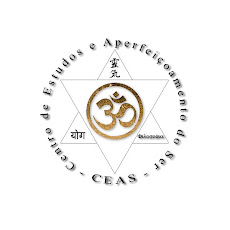Thursday, June 3, 2010
Purna Yoga or Integral Yoga
In the teachings of Sri Aurobindo, Integral yoga (or purna yoga, Sanskrit for full or complete yoga, sometimes also called supramental yoga) refers to the process of the union of all the parts of one's being with the Divine, and the transmutation of all of their jarring elements into a harmonious state of higher divine consciousness and existence.
Sri Aurobindo's Integral Yoga should not be confused with a trademark "Integral Yoga" of Swami Satchidananda.
He describes the nature and practice of integral yoga in his opus The Synthesis of Yoga. As the title of that work indicates, his integral yoga is a yoga of synthesis, intended to harmonize the paths of karma, jnana, and bhakti yoga as described in the Bhagavad Gita. It can also be considered a synthesis between Vedanta and Tantra, and even between Eastern and Western approaches to spirituality.
The theory and practice of Integral Yoga is described in several works by Sri Aurobindo. His book The Synthesis of Yoga, the first version of which appeared in the Arya, was written as a practical guide, and covers all aspects of Integral Yoga. Additional and revised material is found in several of the later chapters of The Life Divine and in other works. Later, his replies to letters and queries by disciples (mostly written during the early 1930s) were collected into a series of volumes, the Letters on Yoga. There is also Sri Aurobindo's personal diary of his yogic experiences, written during the period from 1909 to 1927, and only published under the title Record of Yoga. - Wikipedia -
Prof. Carlos Eduardo Souza
Sri Aurobindo's Integral Yoga should not be confused with a trademark "Integral Yoga" of Swami Satchidananda.
He describes the nature and practice of integral yoga in his opus The Synthesis of Yoga. As the title of that work indicates, his integral yoga is a yoga of synthesis, intended to harmonize the paths of karma, jnana, and bhakti yoga as described in the Bhagavad Gita. It can also be considered a synthesis between Vedanta and Tantra, and even between Eastern and Western approaches to spirituality.
The theory and practice of Integral Yoga is described in several works by Sri Aurobindo. His book The Synthesis of Yoga, the first version of which appeared in the Arya, was written as a practical guide, and covers all aspects of Integral Yoga. Additional and revised material is found in several of the later chapters of The Life Divine and in other works. Later, his replies to letters and queries by disciples (mostly written during the early 1930s) were collected into a series of volumes, the Letters on Yoga. There is also Sri Aurobindo's personal diary of his yogic experiences, written during the period from 1909 to 1927, and only published under the title Record of Yoga. - Wikipedia -
Prof. Carlos Eduardo Souza
Subscribe to:
Comments (Atom)

